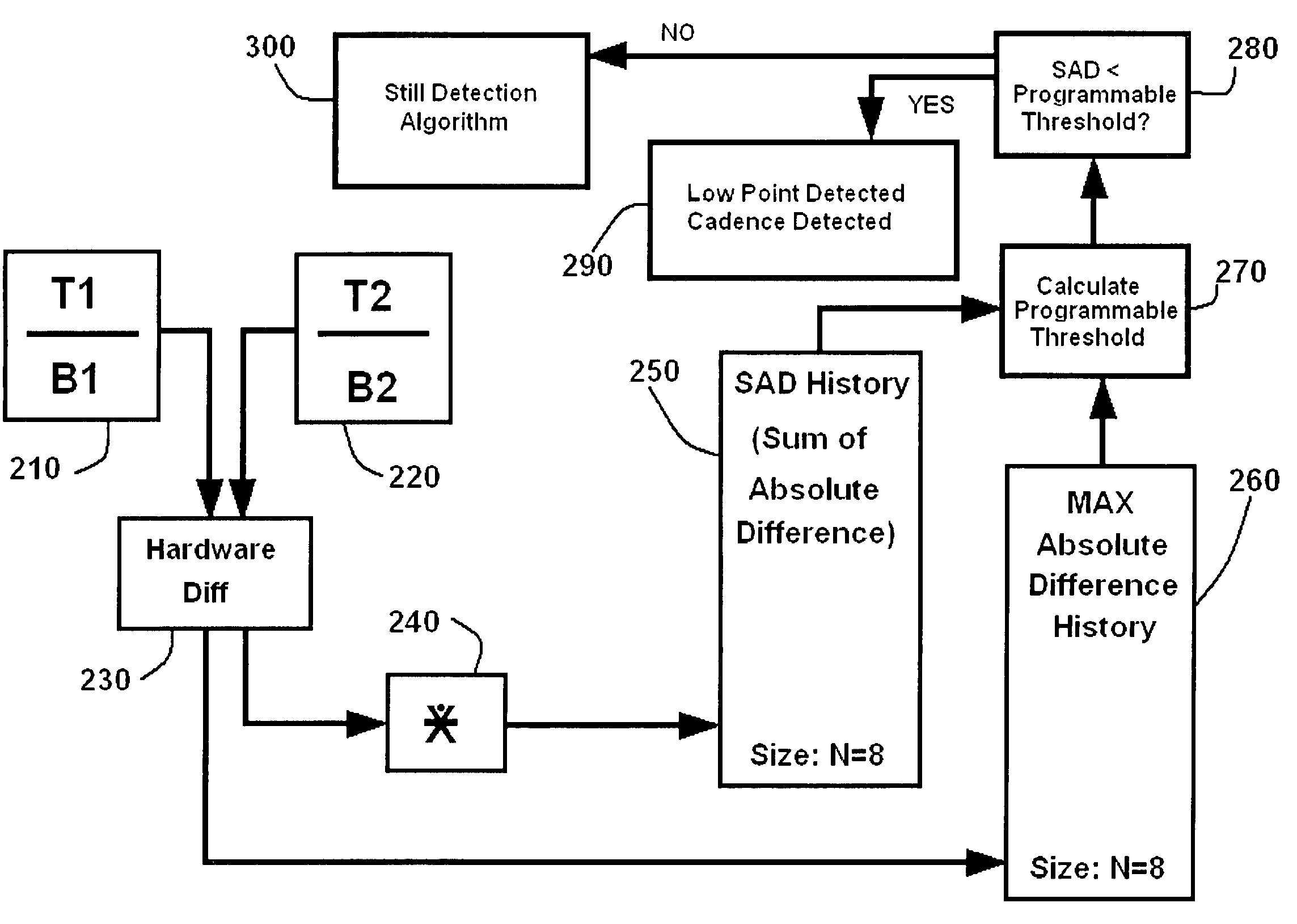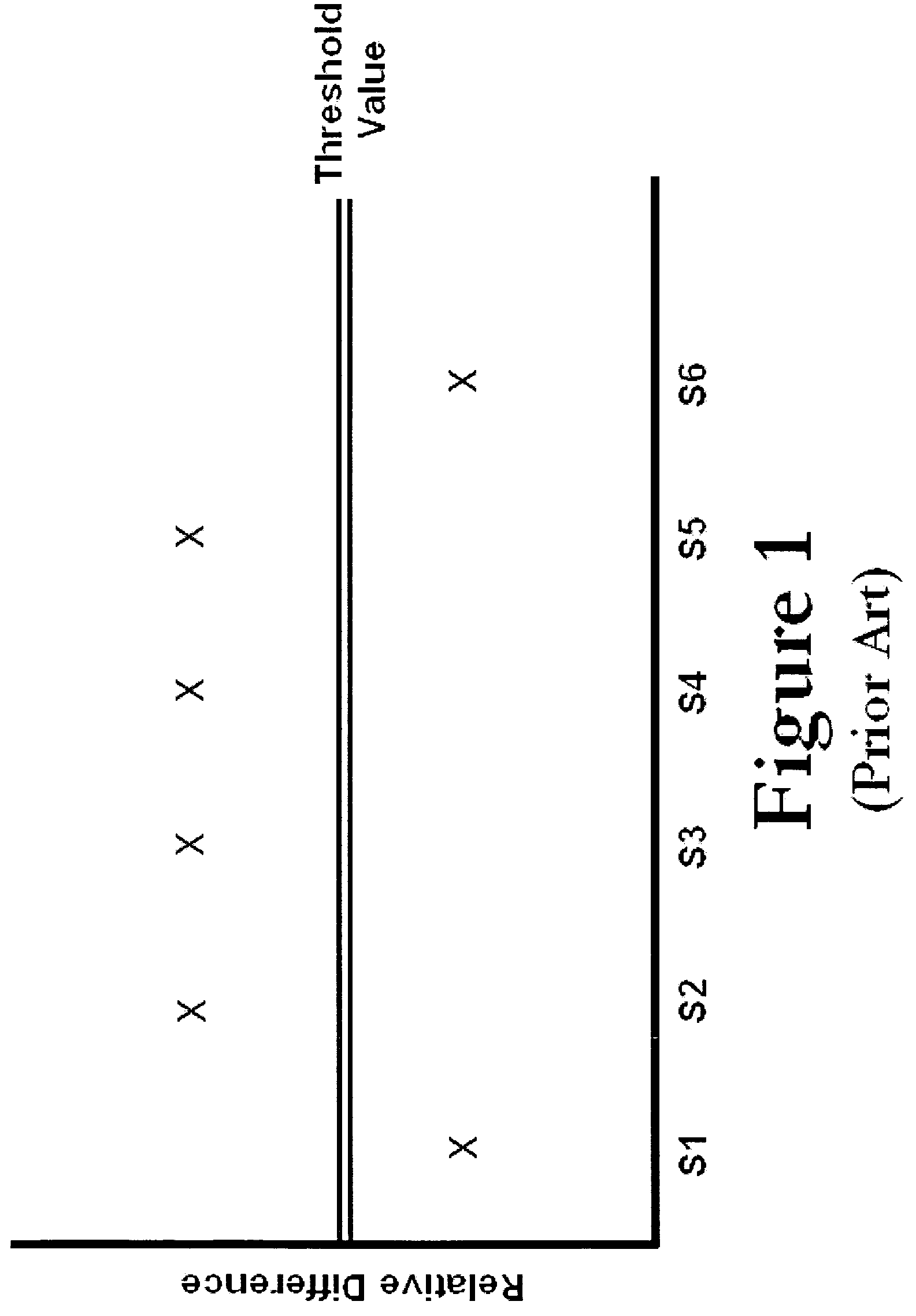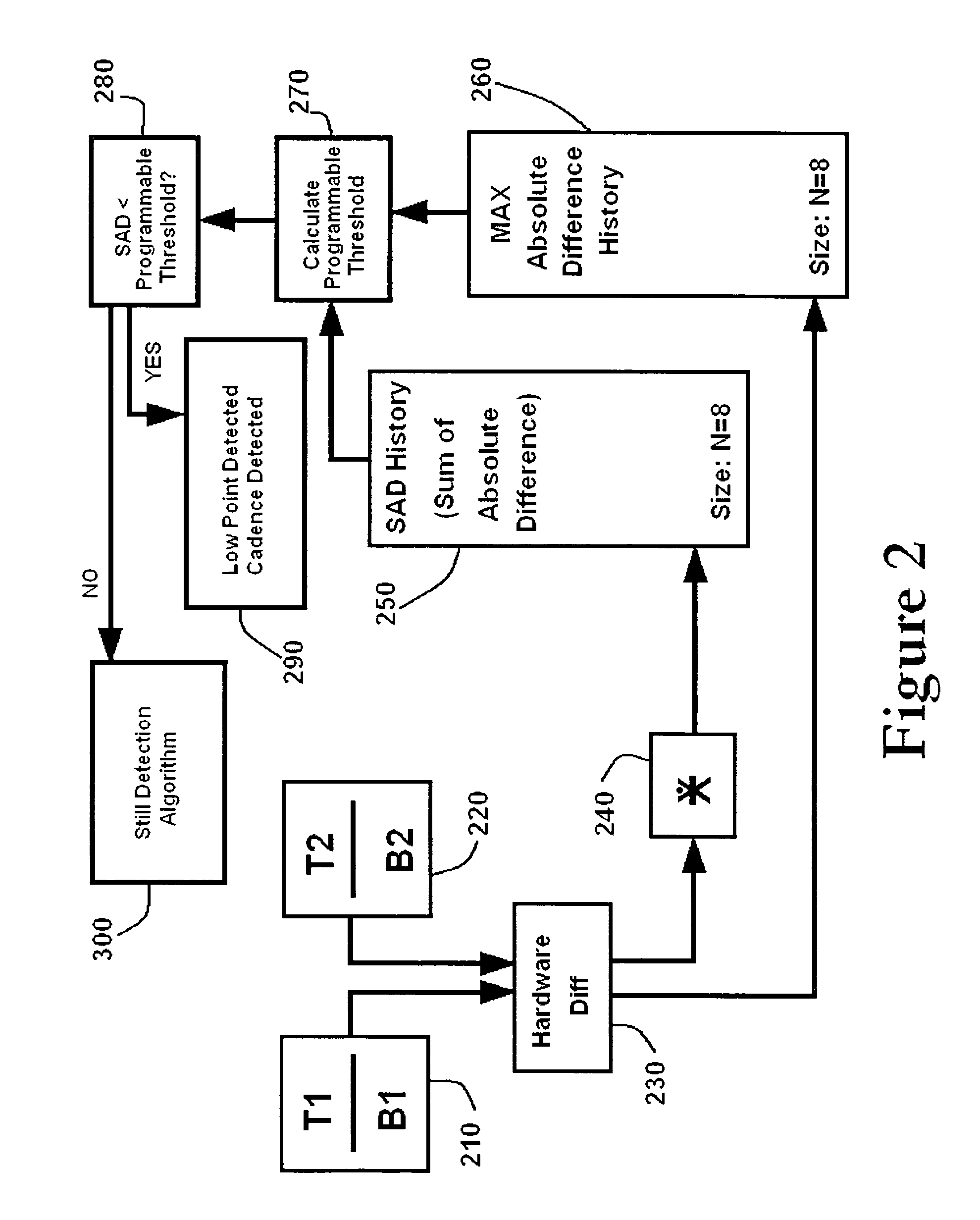Telecine conversion detection for progressive scan playback
a technology of progressive scan and conversion detection, applied in the field of dvd, can solve the problems of low value and difficult detection of cadence of telecine, and achieve the effect of reducing calculation overhead
- Summary
- Abstract
- Description
- Claims
- Application Information
AI Technical Summary
Benefits of technology
Problems solved by technology
Method used
Image
Examples
Embodiment Construction
[0032]FIG. 2 is a block diagram illustrating the operation of the method and apparatus of the present invention. Referring to FIG. 2, the present invention provides a moving average filter 240 with a weighting factor to calculate the continuously programmable threshold to determine whether fields could be considered identical or not, in order to better detect the cadence of a TELECINE encoded video signal. This moving average filter is also used in detecting the presence of still images in the video data stream by detecting total difference in Y (luminance) of the field or a sample portion thereof, and then calculates the average difference in luminance (Y) of the frame. This average luminance value indicates the degree of difference between fields.
[0033]As illustrated in FIG. 2, two frames of video data 210 and 220 may be input to the system, each having two fields, T1 and B1 and T2 and B2, respectively. A difference is calculated between the luminance values of the two fields for ...
PUM
 Login to View More
Login to View More Abstract
Description
Claims
Application Information
 Login to View More
Login to View More - R&D
- Intellectual Property
- Life Sciences
- Materials
- Tech Scout
- Unparalleled Data Quality
- Higher Quality Content
- 60% Fewer Hallucinations
Browse by: Latest US Patents, China's latest patents, Technical Efficacy Thesaurus, Application Domain, Technology Topic, Popular Technical Reports.
© 2025 PatSnap. All rights reserved.Legal|Privacy policy|Modern Slavery Act Transparency Statement|Sitemap|About US| Contact US: help@patsnap.com



